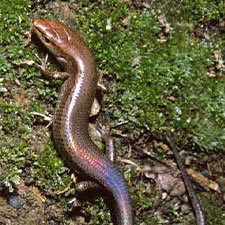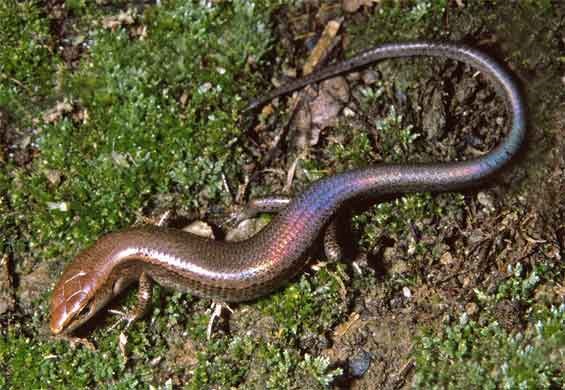 Plague skinks
Plague skinks
Common name: Plague skink
Botanical name: Lampropholis delicata
Management programme: Advisory
Where are they originally from?
They were introduced from Australia and first recorded in New Zealand in the 1960s and probably arrived accidentally via contaminated cargo.
Why are they a pest?
- Able to reach high populations in a relatively short time.
- Competes for native lizards for food, habitat and space.
- Have led to significant decreases in native lizard populations in other countries they have been introduced into.
Where are they found?
- Not yet found in the South Island.
- Prefer moist areas, commonly under vegetation, litter, rocks and logs.
- Thrive in urban areas, gardens, commercial areas, industrial sites, garden centres and waste ground.
What do they look like?
- A small lizard, measuring about 3-4 cm from nose to hind legs excluding its long thin tail.
- Brown or grey-brown with a dark brown stripe down each side and an iridescent rainbow or metallic sheen when seen in bright light.
- One large scale in the centre-top of its head where native skinks have two smaller scales.
What are the rules?
Advisory
Council does not enforce the control of advisory species. It is landowner/occupier responsibility to manage these pests. Council may provide advice on how to manage or control advisory species if required.
How do you get rid of them?
There are no control methods that would not also harm native skinks.
If you wish to relocate any equipment, goods, or other freight to an area that is free of this species, thoroughly check your personal belongings for plague skinks before departure.
Potting mix in potted plants is a favoured breeding habitat. Check these for any of the small white eggs, especially if plants are to be used in restoration projects, such as on off-shore islands or key ecosystems on the mainland.
Rainbow skinks are Unwanted Organisms under the Biosecurity Act 1993. It is illegal to knowingly move, spread, release, breed, display or sell rainbow skinks without permission from MPI Biosecurity New Zealand.
Read more on pest control guidelines and regulations

Image credit: DOC
